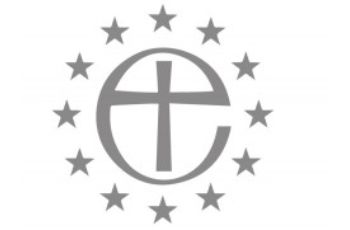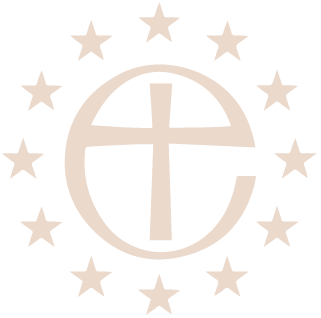
Sermon for the Sixth Sunday of Easter – 25th May 2025 -Readings: Acts 15, 1-2, 22-29; Revelation 21, 10-14, 22-26; John 14, 23-29.
Fr Leonard Doolan – St Paul’s Athens
Let’s start with a little imagination game – a little more difficult if you have never visited Athens, but close your eyes and join in if you can. It is May 25th 2025. You are in Athens standing in Adrianou (street) with the Roman Agora behind you – Roman, okay, but not everything modern is bad! You are walking in the direction of an area named after a far more ancient monument, Thisseio. Some African guys are harassing passers-by, especially young female tourists, to buy their bangles and beads. This is Plaka district of Athens, so not surprisingly you are met by shops and little street stalls selling everything tourists seem to want – from necklaces that spell your name in Greek, to key-rings in the shape of something you certainly wouldn’t take home to your elderly grand-parents as a holiday souvenir.
There are restaurants galore, all setting out before us the very best of Greek tourist menus with a designated staff member whose job it is to entice us to check the menu and chose this restaurant – oddly it is the ones with rather attractive young female staff that are the busiest. I am wondering if there is a marketing strategy here?
All along the right hand side is a seemingly endless chain of bars and tavernas and bistros.
Look to your left towards the Acropolis soaring majestically above you. What do you see? Well, rather surprisingly, first there is the Line 1 Metro line which runs from Kifissia to Piraeus. It cuts right through the edge of this ancient site. It is the first and oldest of the Metro lines. The rolling stock is old and ‘tinny’ looking and covered with graffiti – sorry, political art, as it is called. Next, the wall that separates the railway line from the original Greek agora, the ancient market place of classical Athens. Where you are standing is a major tourist viewpoint. The modern wall separating the Metro line from the Agora is one vast marble canvas of metropolitan art – that’s the graffiti again – sprayed on the wall to support every type of cultural, social and anarchist ideology.
Next is the agora iself, with is peaceful atmosphere – except when the old train goes past – with the American School reconstruction of a classical stoa to elicit from us something of the image of ancient Greek philosophers and sophists gathering to discuss the meaning of life, Epicureans, the transmigration of the soul, Platonists, and Pythagoreans, and every imaginable ancient school of thought.
Rising up beyond it stands the magnificent and impressive Acropolis, with its Parthenon first built as a temple to the Virgin Goddess Athena, in later centuries becoming a holy temple of the Panaghia for Byzantine worship. It is an iconic global icon, though I have to say it is not as old as the Temple of Aphea in my island of Aegina! That’s a little bit of local promotion.
In Ottoman times the Parthenon of Athens was used to store ammunition. It was because of this that an explosion created the ruin that we now see. I often wonder what the poor Ottoman guardsman thought when he accidentally threw down his cigarette butt. ‘Oops!’ ‘Πω, Πω’ if he had a bit of demotic Greek.
Between where you are standing and the Acropolis, there is a small hill. It is crawling with people, who look the size of little ants – but it is busy. It is, of course, the Areopagus hill, where once stood the building where the Athenian Council would meet. It is here that St. Paul spoke to the ‘men of Athens’ in his famous speech – I see you are a religious people…I saw a tomb to the ‘unknown god’…let me tell you about him; A stunning moment of Christian evangelization.
This was a long time ago, and much has changed. However much has not. Man is still polytheistic as he was when the Parthenon was erected, and he sets up shrines to his own gods. If you stand there there in Adrianou, the street named after the Emperor Hadrian, whose magnificent library is at the start of this street, you will witness some of those modern day deities. Travel, commercialism, globalization, pollution, environmental usually seek to worship what challenges us, what makes us look face-to-face with ourselves, face up to what we do to each other and to God’s creation.
So as we look towards this rather barren little hill, with the little ants crawling over it, we are drawn to think that St. Paul’s message to the Athenians, now universally available through the writing of St. Luke in his Acts of the Apostles, which we read Sunday by Sunday in the season of Easter is as relevant now as it has ever been.
In a little monograph Metropolitan Kallistos Ware synthesizes this, ‘We may regard man as an animal that weeps and laughs; or with the Stoics, as a logical or rational animal (λογικόν ζώον); or with Aristotle as a political animal (πολιτκόν ζώον). But we come closer to the heart of the matter if we think of man as a Eucharistic or priestly animal…endowed with the vocation of offering the world back to God… in a continuing act of joyful doxology.’ (The Beginning of the Day, Kallistos Ware, Akritas, 2007 p45)
What a full and fulfilling vision this is for mankind. Could it be that this is what is generally missing for us in our generation? Is this the ‘unknown God’ we need to hear about, for the first time, or again, or again and again?
So like St. Paul I refer you to Jesus – the Jesus who for St. Paul has become the very cornerstone of his life. This Jesus was born in Bethlehem, lived in Nazareth, died on a cross in Jerusalem, but who is also co-eternal with God, our Father; the one we call the alpha and the omega. His words are the words of eternal life, he is the source and being of the Father’s love for each and every one of us. He is the risen Lord of Life.
In our gospel this morning Jesus, having promised to his followers that he must leave the world in order that the Holy Spirit inhabits universally, tells his followers not to be afraid. Friends we need to hear this message amidst the challenges facing us now. We need to hear this word of comfort in a world dominated by uncomfortable world leaders obsessed by self-interest, not common good. We need this word of comfort in a sceptical world that so readily challenges the stability of traditional religion, the faith handed on to us by our forefathers and mothers, all the way back to Christ himself. I am the Way, the Truth and the Life, Jesus says. In a moment after our gospel this morning Jesus says, I am the true vine.
What is truth? Says Pontius Pilate. What indeed? Truth Social, the charge of fake news when you don’t like what you hear. Relativism – it’s your truth but I don’t need to share it, as I have my own truth. We can all set up our own form of propaganda and call it truth.
Christ is risen from the dead! That can’t just be our truth – either he is risen or he is not. If he is risen then it is a truth that all need to hear about, a truth that you and I have to show in our lives, in our relationships, in our actions. It must emerge as truth for all from the very heart of what we do as we gather at the Eucharist where we share the true bread and the true vine of the kingdom. Remember those words of Metropolitan Kallistos – man is a priestly, Eucharistic animal. Let this be our guiding principle, the very bedrock of our faith and practice. ‘do not be afraid’. Keep the faith, share the good news, don’t keep it to yourself. After all, why would you not wish to share this piece of good news to everyone:
‘Then I saw a new heaven and a new earth, for the first heaven and the first earth had passed away…behold the dwelling place of God is with man…he will wipe away every tear from their eyes, death shall be no more, neither shall there be mourning, nor crying, nor pain any more, for the former things have passed away’. (Rev. 21, 1- 4)
This Jesus says, ‘I will not leave you orphaned; I am coming to you. In a little while the world will no longer see me, but you will see me; because I live, you also will live.’
It is May 25th 2025. Adrianou is packed solid with tourists, and the pilgrims scurry around like ants over the Areopagos. Something rather unique has replaced, subverted the temple of the Parthenon, even the Temple of Aphea on Aegina, and the temple in Jerusalem.
I saw no temple in this city, (St. John says) for its temple is the Lord God Almighty and the Lamb. And the city has no need of sun or moon to shine on it, for the glory of God gives it light, and its lamp is the Lamb.
We look towards the Areopagus, and we are reminded of Paul’s message; the good news of Jesus, the Lamb, who is the light of the world.


No Comments